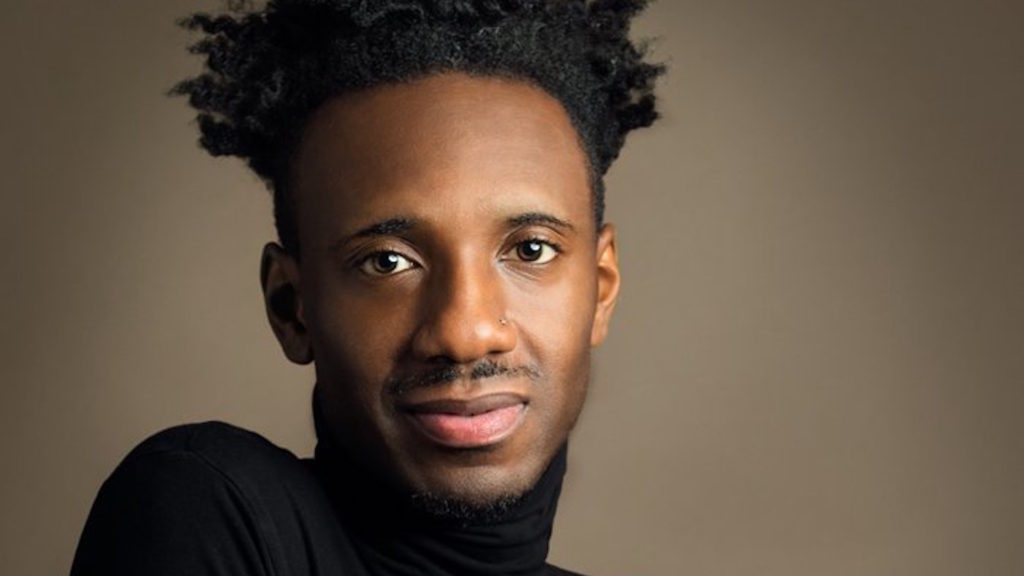
By Katie Moritz | Rewire
As a queer, black man, Donja Love has had to carve out a spot for himself in this world—a world with expectations about how men, especially black men, ought to behave.
Love, a playwright, pushes back against those expectations in the most loving way possible—through a practice he calls “radical softness.” To him, that means giving himself the freedom to laugh, to smile, to love how he wants to love. And to love himself for who he is.
Love is one of eight LGBTQ people featured in the second season of PBS Digital Studios’ series “First Person,” portraits of LGBTQ people whose experiences are as diverse as the cultures that share the United States.
Love believes traditional expectations of masculinity were artificially constructed to divide people. For him, radical softness is a way to break away from a system that holds people back from being their authentic selves.
“Existing in a space as a black man to be soft, a black queer man to just be as open as possible, as comfortable as possible,” Love says in the upcoming season of “First Person.”
“We live in a world that says you can’t do this, this and that and you have to do this, this and the other. … And just seeing those images of black carefree joy is just really important.”
This season will tell the stories of seven other stars, too, including Ericka Hart, a queer breast cancer survivor; Jayne Quan, a Filipino-Chinese gender non-binary photographer; Tony Ray, a queer black cosplayer; Eman Abdelhadi, a queer Muslim activist; and Nala Simone Toussaint, a trans activist and HIV prevention educator.
Why should LGBTQ folks to tell their stories?
For some LGBTQ people, coming out is extremely difficult. It can take years to accept yourself and even longer for others to catch up. In fact, a 2016 study found individuals who realized they were LGBTQ before the age of 18 waited an average of seven years before telling anyone and those over 18 waited three years.
Stories like the ones told in “First Person” can provide people who aren’t members of the LGBTQ community a rare and honest look at how it really is to be queer in this country.

But those stories can also encourage LGBTQ people who are still working on coming out that living an authentic life is worth it—and it’s becoming more celebrated all the time.
Every LGBTQ person’s experience and circumstance is different, but there are so many benefits to being open about who you really are. Stanford University lecturer J.D. Schramm—who is gay himself—encourages LGBTQ folks to come out eventually. It’s okay if that takes a long time.
“Every LGBTQ person has one thing in common with every other LGBTQ person, and that is the journey that we’ve all gone on in order to be ready to communicate who we are,” he said to the university. “Coming out is not a moment in time, it is a process. But it’s still a personal choice. I think it’s best, but it’s not my decision to make for others.”
Schramm does work on how coming out can help LGBTQ folks become stronger leaders. He calls it “leading out loud.” (You can read more on his theory on leading authentically here.)
Even with all the progress that’s been made on LGBTQ rights in the past few years, it can be uncomfortable to be out in some environments, including at work, Schramm said. But LGBTQ folks taking more control of the queer narrative and telling their own stories is slowly changing this, he said.
Schramm believes being your authentic self at work is a key step to becoming a strong leader.

How to come out at work
First things first: Before you take a job, find out how the company treats its LGBTQ employees, Schramm advised. Some companies make a point to embrace their employees’ queer identities, sponsoring pride or diversity organizations and events, for example. The way your interviewers respond to questions about LGBTQ employees is probably a good insight into how the company would treat you once you’re there.
If you’re already in a job and are ready to come out, here’s what Schramm recommends:
1. Privately share with a smaller group of work friends and see how it goes.
2. Connect with openminded leaders in your organization and let them mentor you.
3. Come out in an indirect way, like listing membership to LGBTQ organizations in your LinkedIn profile or resume or mentioning your partner in your staff bio. (That’s how Schramm came out at Stanford, he said.)
4. Bring your partner to a work event that invites significant others to attend.
5. Share stories about your life: “When my ex-boyfriend and I went to London…” or “When I was a leader in the undergrad gay pride group…”
6. Make connections with other LGBTQ folks and leaders within your organization, especially those who are out. Get the trailblazers on your team.
![]() This article originally appeared on Rewire
This article originally appeared on Rewire
© Twin Cities Public Television - 2017. All rights reserved.
Read Next



